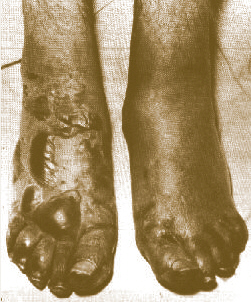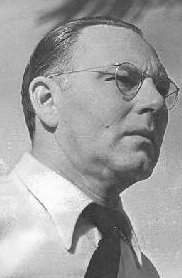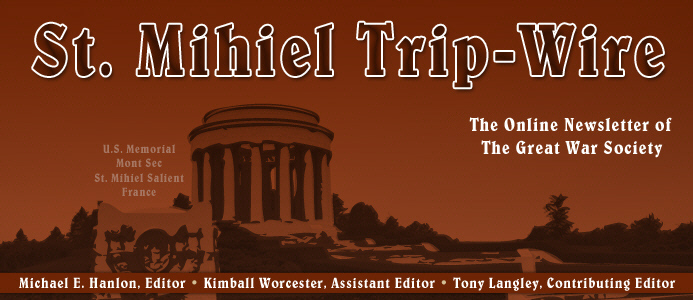

TRENCH REPORT: The annual World War I Seminar--held this year in Kansas City at the National WWI Museum, September 10-11, was a huge success. Over 135 individuals were in attendance. My own talk, which was the opening presentation, was well received. I'd like to express my personal appreciation to the seminar committee of T.J. Johnson, Sal Compagno, Claudine Thomas, and Joann Buckley, as well as Dana Lombardy and Steve Suddaby, Presidents of the TGWS and WFA-USA, respectively. This issue of the Trip-Wire is a bit late because I've just returned from leading a battlefield tour of Gallipoli. More on that in next month's issue. MH
This Month's Internet Feature
Rationing During the War
Thanks to Donna Wagner
Bread Rationing in Germany
Wisconsin Faces the Challenge of WWI
(Corrected title)
Rationing in the UK
Rationing in Britain During the World Wars
Fighting Rationing: Recipe for War Cake
Children Conserving Food in WWI
New at Our Own & Our Friends' Great War Websites
Click on Title or Icon to Access
|
Another great find by new WWI enthusiast Donna Wagner:
At Great War Society Sites
At WFA-USA Sites
|
Announcement
The Great War Society and the Western Front Association - U.S. Branch continue
to make progress on the proposed merger of the two organizations. On 10
September the WFA Board of Directors voted unanimously to submit the merger
to the WFA membership for a vote with the Board's recommendation that it be
approved. This was announced at the joint national seminar where it was
also announced that the new name for the merged organization will be the
World War One Historical Association. If the merger is approved, it will
take place during the 2011 calendar year. Dana Lombardy, Pres. TGWS
Steve Suddaby, Pres. WFA-USA
|

Question: Who developed the concept of "defense in depth"?
One strategic thinker who without a doubt developed the strategy to its fullest extent is the German General Staff officer Colonel (later General) Fritz von Lossberg. He is credited, for instance, with the building of the Hindenburg line, which was a focal point during the 1917 and 1918 campaigns.
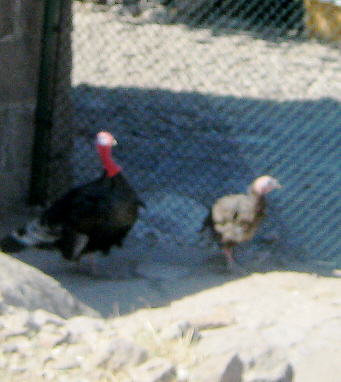
Turkeys in Turkey!
Documentary Evidence That Turkeys Do, Indeed, Live in Turkey; Photo Taken 27 Sep 2010 by Editor M. Hanlon at the Assos, Turkey Archeological Site
|
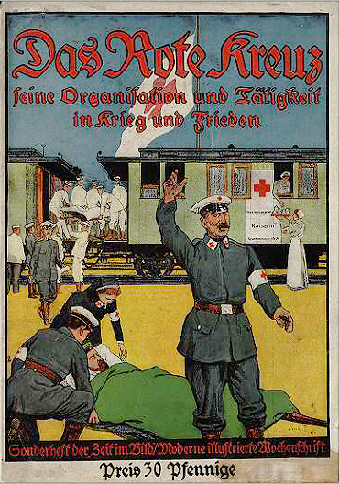
German Magazine Cover
|
GREAT WAR 2010 EVENT CALENDAR
|
A World War I Event Calendar
We continue to add important events to our WWI Calendar. There is simply more information than we can display here on the Trip-Wire. It is available for all, however, by downloading it from our Website.
(download calendar as Word document)
|
World War I Symposium
October 23, 2010
Henrico Theatre,
Henrico, VA 23075
(flyer and registration form)
|
WFA-Pacific Coast Branch Annual Seminar
March 4-6, 2011
Bay Street Armory,
Victoria BC
(flyer and registration form)
|
Western Front Association
U.S. Branch Chapter Meetings
Check for Your Region
Regularly Updated (details)
|
Great War Society Monthly Chapter Meetings
Berkeley, San Francisco, and
Palo Alto, CA
Regularly Updated (details)
|
Upcoming Events at the National World War I Museum
Kansas City, MO
Regularly Updated (details)
|
Send additions/corrections for our master schedule:
Email Response
|
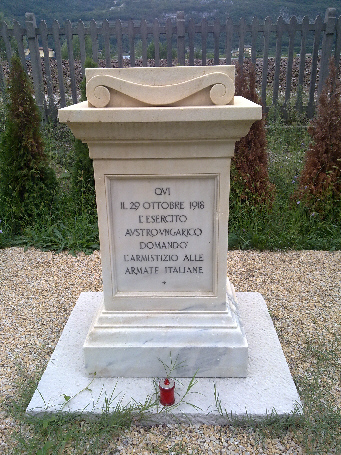
Roadside Armistice Marker for the Italian Front, South of Rovereto
If you are traveling to the UK and, if, you are a T.E. Lawrence aficionado, you may want to sign on to Oxford University's new course on Lawrence of Arabia. (link)
Our pal, niece of famed nurse Helen Fairchild, and Trip-Wire contributor, Nelle Rote interviewed on Belgian TV. (link)
Dr. Graydon Tunstall, author of Blood on the Snow and who recently spoke at the National Seminar, will be speaking on the 1915 Carpathian Campaign at the Plaza Branch of the Kansas City Public Library, 7 October 2010. The presentation is sponsored by the Midwest Chapter of the Western Front Association.

I had entered the holocaust [of the Great War]still childish and I emerged tempered by my experience, but with my illusions intact, neither shattered nor cynical.
Anthony Eden
Future British Prime Minister
|
|
|
|
|
Page Two
|
|
|
 |
Images from the 2010 National
World War I Seminar, September 10-11
National Museum, Liberty Memorial, Kansas City, MO
|
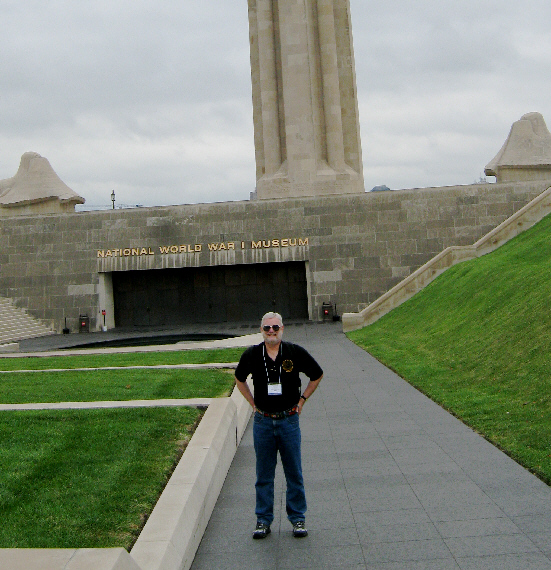
WFA-USA President Steve Suddaby at the Museum Entrance |
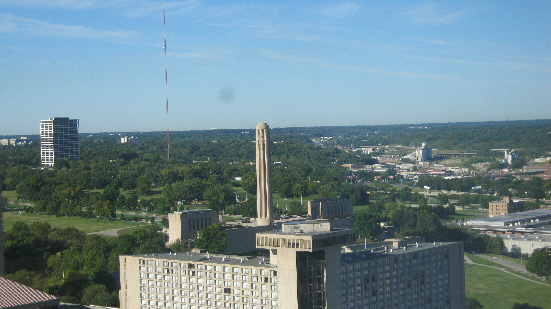
The Liberty Memorial (Tower, Center), Which Incorporates
the National Museum |
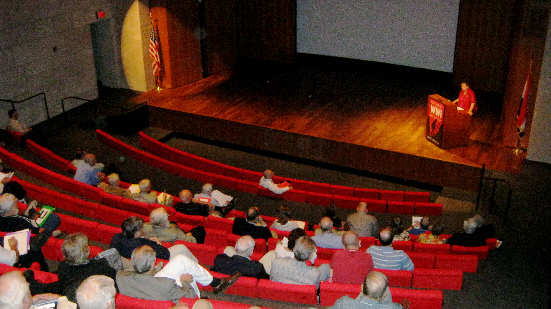
The Audience's View at the Auditorium |
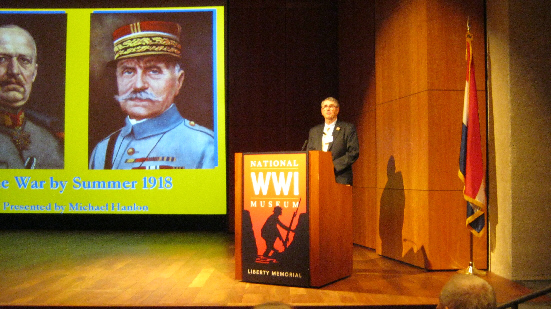
Trip-Wire Editor Mike Hanlon Delivers the Opening Talk |

Readers Susan Neeson and Connie Tibbets |
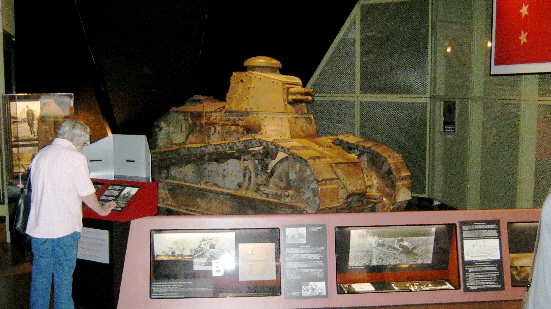
Renault FT-17 Tank Exhibit |
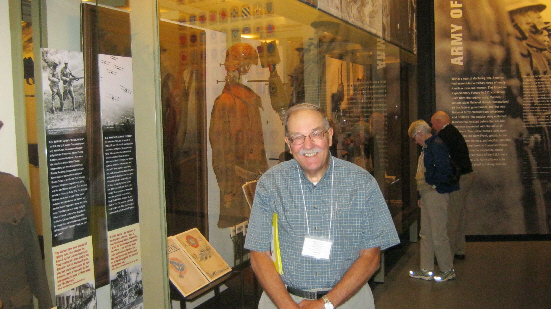
Harold Carlson at an Exhibit, with Sheila Swigert and Bruce Barton Behind |

Past Contributors David Beer at the Museum Gift Shop,
Anatole Sykley at the Counter |
|
|
World War I Headlines
in the
21st Century
|
|
Christina Holstein's Sleeping Beauties
Private Monument to
Major André Bailly at Verdun
|
The thick forest that covers the Verdun battlefield conceals a fair number of field memorials. They range from simple crosses bearing a name and date in sometimes amateur lettering to finely carved headstones, obelisks, and statues. Forgotten and overgrown, many had become difficult to find in the dense woods, but recent forest clearance has restored access to some of them and they include one particularly spectacular example of postwar remembrance: a granite mausoleum. It lies in a rather unvisited part of the battlefield close to the old Chevert Barracks that stand -- or rather stood, since the barracks have recently been demolished -- on the hillside overlooking Verdun from the west.
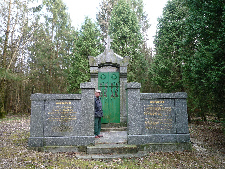
Front View
Past Trip-Wire Columnist
Tony Noyes Looks On
You will find it in Forest Block 19, beside the track that runs between the D24a road and Fort Belrupt. Set 50 yards into the forest the mausoleum was for years completely invisible but foresters have recently cleared away the mass of trees that hid it from view and today this Sleeping Beauty can be seen again. According to the inscription in gold lettering at the entrance the mausoleum is the final resting place of Major André Bailly, age 46, commander of 1st Group, 103rd Heavy Artillery Regiment, who was killed at his command post on 13 March 1916. That Major Bailly was a man of substance is clear not only from the size and style of the memorial' but also from the inscription over the door. He was a graduate of the Ecole Polytechnique (the famous French scientific and engineering school established in 1794), held the rank of Knight of the Legion of Honour, was an officer of the Tunisian Order of Nichan-Iftikar, and had won the Croix de Guerre.
|
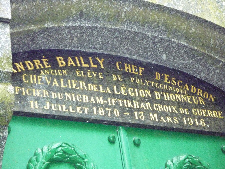
Inscription for Major Bailly
The polished granite panels at the entrance are inscribed on one side with his name and date of death and on the other with citations in corps and army orders, both panels in gold letters, while the small central building has stained-glass windows and fine doors ornamented with laurel wreaths.
So far I've searched in vain for information about the events of that led to Major Bailly's death. The War Diary of his unit is not to be found on the wonderful French Ministry of Defence website, and none of the sites I use for regimental histories can produce one for 1st Group, 103rd Heavy Artillery Regiment. But whatever it was that happened at his command post on that day, Major Bailly's family wanted him remembered with style, and it is only a pity that such an interesting memorial should be all but forgotten.
 Lateral View |
|
|

|
German Flamethrowers in Action
|
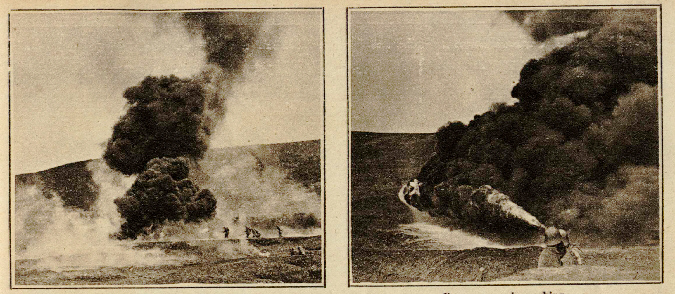
|
Click Here to Visit the Website of Our Contributing Editor Tony Langley
War in a Different Light

|
|
Subscribe to Our Online Magazine
|
|

|
|
|
Page Three
|
|
|
Site of the First Tank vs. Tank Battle
|

At Cachy, Outside Villers-Bretonneux: The First Tank Battle Was Fought Here

German AV-7 That Fought in the Battle. Three AV-7s Faced Three British Mark IVs
|
Trench Foot: Part 1
Trench foot, formerly known as chilled foot, occurs when the feet are wet for long periods of time. It can be quite painful, but it can be prevented and treated. Symptoms of trench foot include a tingling and/or itching sensation, pain, swelling, cold and blotchy skin, numbness, and a prickly or heavy feeling in the foot. The foot may be red, dry, and painful after it becomes warm. Blisters may form, followed by skin and tissue dying and falling off. This picture shows a serious case.
|
Trench Foot: Part 2 - How did the military prevent it?
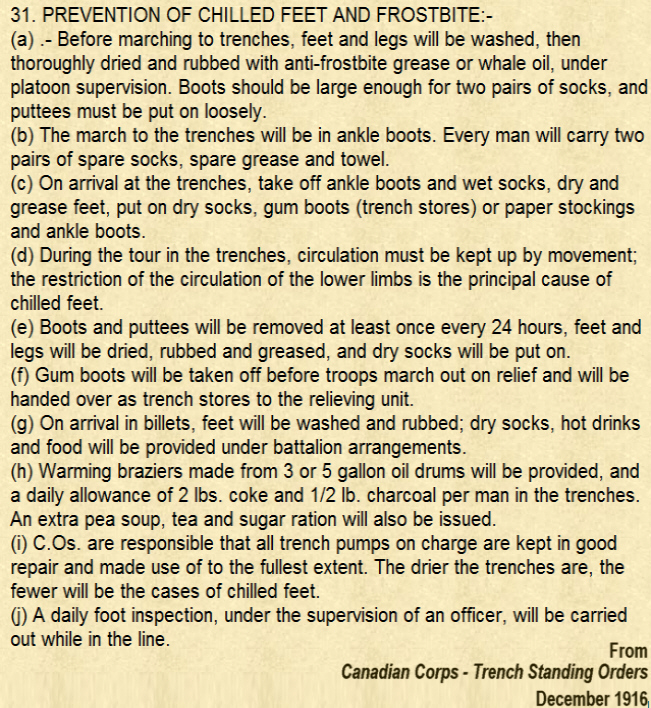
|
|
|
 |
Doughboy Author of
Toward the Flame
Hervey Allen
From the Arlington.com Website
|
William Hervey Allen, Jr. was a major American novelist of the 1930s and 1940s, specifically for his book Anthony Adverse, one of the biggest selling novels of the 1930s and the source for a massively successful Warner Bros. film. In actual fact, he enjoyed two successful careers as an author, first as one of the most popular poets of the "Lost Generation" that immediately followed World War I, and then as a bestselling author of historical fiction.
Rather ironically, he'd never set out specifically to be an author, per se, but fell into writing while in search of a career for himself and convalescing from injuries suffered during World War I. Born William Hervey Allen, Jr. in Pittsburgh, PA, he was the son of William Hervey Allen, an entrepreneur and inventor, and the former Helen Eby Myers. He grew up emotionally distant from his father, whom he held responsible for impoverishing the family with his dubious business ideas, and was, instead, an admirer of his paternal grandfather, who had been a pioneer and an engineer. The pioneers, the spirit behind them, and the builders of the American continent, would later become key focuses of his fiction.
Allen qualified for admission to the United States Naval Academy at Annapolis, but he was forced to leave as a result of serious sports injuries. He received a degree in economics from the University of Pittsburgh in 1915, but in the absence of any serious career goals, he began writing poetry and also seeking out some larger cause in which he could serve a useful purpose. He became a passionate believer in President Woodrow Wilson's attempt to intervene in the Mexican Revolution on behalf of democratic rule, and this was how Allen came to join the Pennsylvania National Guard in 1916. He served in a unit posted to El Paso for several months before returning to civilian life.
Allen was back only three months when the United States entered World War I, and he was recalled, promoted to first lieutenant, and posted to France. He might well not have lived through the conflict: Allen served in combat and was gassed, succumbed to shell shock (what is now called Post-Traumatic Stress Disorder), and spent an extended period in the hospital. It was there that his literary career began, with the poetry he wrote about his war experiences. His work was filled with cruel, bitter imagery and a profound sense of waste, reflecting the author's own disillusionment. His writings found a wide audience among millions of readers for whom the American involvement in the European war -- though it had very likely saved civilization in Europe -- was a psychological and social wound that wouldn't heal.
The Blindman, published in the December 1919 issue of North American Review, became his best-known poem; read by millions, widely praised, studied, and discussed, it heralded the perceived birth of the "Lost Generation" of the 1920s, dislocated from their social moorings, their youth and expectations shattered, and adrift in life. The acclaim for his work hit Allen rather suddenly, and at a point when he was still putting the finishing touches on his skills and credentials as a writer. In 1919 and 1920, as he was becoming a major poet, he was taking graduate courses at Harvard. By the early part of the decade, Allen had gone into retreat from his fame, taking a job as a high school English teacher in Charleston, SC, where he also took a part in founding the Poetry Society of South Carolina.
He later taught at Columbia University and Vassar College -- where he subsequently married one of his students, Ann Hyde Andrews -- and gradually shifted his work toward prose as well as poetry, publishing a personal remembrance of the war entitled Toward the Flame: A War Diary in 1925, and Israfel: The Life and Times of Edgar Allen Poe the following year.

Grave at Arlington |
During the 1930s Allen gave up writing poetry almost entirely, turning to prose with greater energy and ambition than ever. His most widely read work, the epic novel Anthony Adverse, followed in 1933. One of the biggest bestsellers of the 1930s, its success surpassed only by Gone With the Wind and a tiny handful of other books, Anthony Adverse was a historical novel set during the Napoleonic era, telling of a man's journey across life and several continents in search of a meaning to his life. In a manner that anticipated the selling of the Harry Potter books and other late20th-century pop-culture phenomena, Anthony Adverse was among the first American novels to be cross-promoted to the public through product tie-ins and other similar promotional devices. The screen rights were purchased by Warner Bros., which spared no expense in filming this blockbuster, among the most expensive releases by the studio before the 1950s. The studio assigned as producer its most prodigiously talented executive, David O. Selznick, who really broke the ground for his production of Gone With the Wind (which hadn't even yet been published) with this film; Director Mervyn LeRoy turned it into a box-office hit starring Fredric March. The movie also served as a vehicle for one of the most distinguished film scores ever written by Erich Wolfgang Korngold. The novel would prove to be the commercial high point of Allen's literary career -- his subsequent novels all sold very well but never dominated the imagination of the mass public in the way that Anthony Adverse had, and none of his later books were brought to the screen.
As late as 1940, his chronicles and observations of World War I were still commanding serious critical attention and readership -- a 1940 publication, It Was Like This: Two Stories of the Great War, was represented in the personal library of Eleanor Roosvelt. Allen's outlook on the world changed with the times, and in the wake of the attack on Pearl Harbor, he abandoned his pacifism. He began work on The Disinherited, which was conceived as a pair of historical epics starting in colonial America, dealing with the birth of the United States, telling of the resourcefulness of the people who started the spread of democratic ideals across the continent. He had finished most of the first volume, The City and the Dawn (which included the books The Forest and the Fort, Bedford Village, and Toward the Morning), and they were completed posthumously with sections of a fourth book that rounded out the planned first half of the epic; the second half, Richfield Springs, was never finished. Even as he spent his last years on this massive series of novels, Allen also branched into nonfictional work, as the editor of a series of books called Rivers of America. The latter helped popularize an environmental consciousness decades before such notions were widely acknowledged or accepted. This was principally a result of his decision to move his residence to Florida, where he developed a deep love for the Everglades. He kept a residence at the Glades in Dade County, where he worked during the last years of his life. Allen died in his home there at the very end of 1949, just weeks after his 60th birthday. Along with Kenneth Roberts and Ben Ames Williams, Allen was one of the most widely read authors of historical fiction of his generation, and his books were heavily reprinted in paperback long after his death.
|
|
|
|

























